
Pin on English
The present perfect tense is a verb form used to refer to a past action or situation that has a present consequence. It's typically used to indicate experience up to the present, recent actions, or a change that occurred over a period of time.

Structure of Present Perfect Tense English Study Page
Table of irregular verbs - English Grammar Today - a reference to written and spoken English grammar and usage - Cambridge Dictionary
present perfect ef
The present perfect is used for actions or events that occurred at an unspecified time before the present.The specific time is not important and therefore we generally do not use specific time expressions ("this morning", "yesterday", "last year"…) with the present perfect.On the other hand, we can use nonspecific time expressions with the present perfect ("never", "ever.

El Present Perfect en Inglés La Guía Definitiva por Profesor Certificado
The present perfect is a verb tense which is used to show that an action has taken place once or many times before now. The present perfect is most frequently used to talk about experiences or changes that have taken place, but there are other less common uses as well. Read on for detailed descriptions, examples, and present perfect exercises.

Present Perfect Tense
Conjugation verb present perfect X English Conjugate Toolbox: Models British vs. American English Auxiliaries, modals Irregular verbs present Infinitive to present Preterite presented Past participle presented Model : obey Auxiliary : have, be Other forms: present oneself / not present Contractions Advertising Indicative Present I present
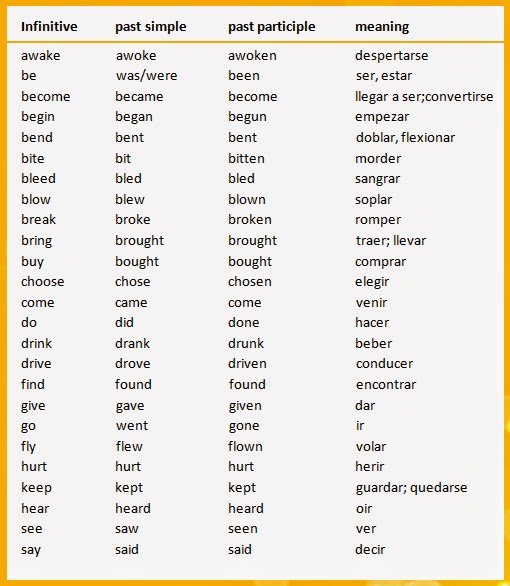
BIENVENIDOS A SEXTO PRESENT PERFECT VERBOS IRREGULARES
The Present Perfect Verb Tense - Video Download PDF In this lesson, you can learn about the present perfect verb tense in English. Does your language have anything like the present perfect? Many languages don't have a similar verb form. This can make it more difficult to use the present perfect correctly in English.

Present Perfect Present Continuous Lista De Verbos En Ingles Mayoría
The present perfect is a relational tense. We use it to consider one state, event or action in relation to another. Fundamentally, the tense is a present tense, not a past tense, because it refers to the present in relation to the past. Another way of putting that is that it refers to the past within the present.

Present Perfect Present Continuous Lista De Verbos En Ingles Mayoría
affirmative. subject + verb have (in the present simple form) + past participle of the main verb. The present perfect is made up of the subject, followed by the auxiliary verb "have", followed by the past participle of the main verb: I have walked. you have walked. he / she / it has walked.
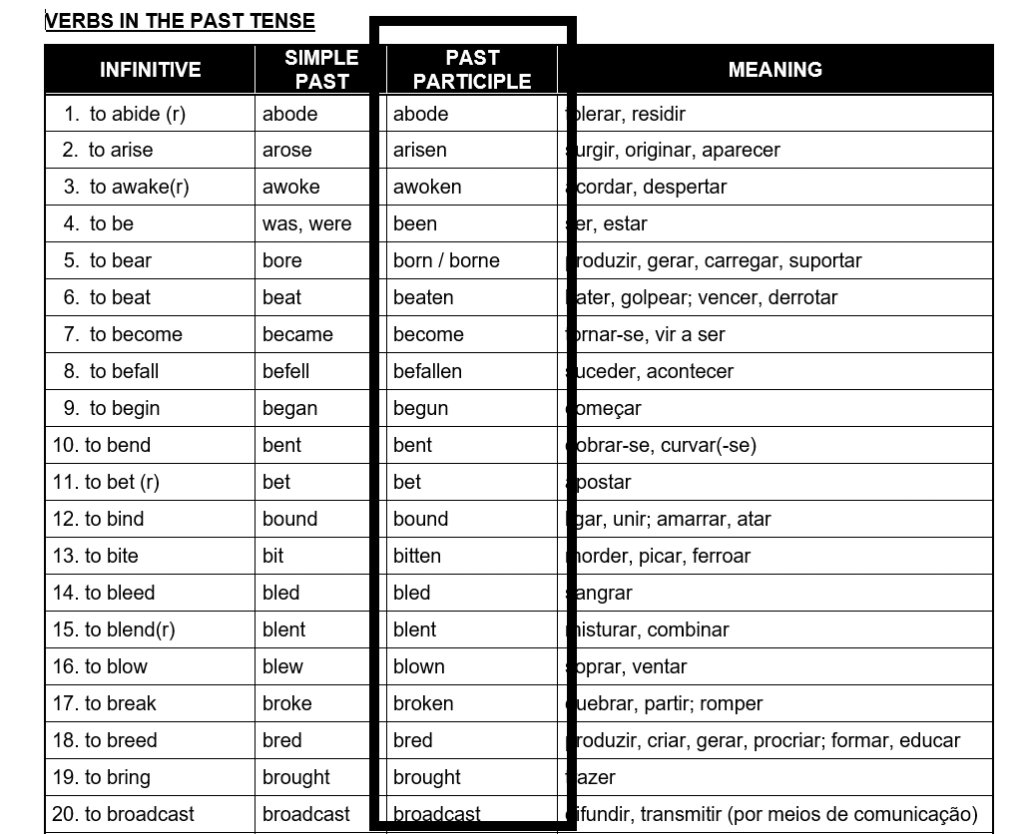
Present Perfect Tense Simplificado 📖 Jack and Jill Present Perfect Tense
The present perfect is formed from the present tense of the verb have and the past participle of a verb. We use the present perfect: for something that started in the past and continues in the present: They've been married for nearly fifty years. She has lived in Liverpool all her life. when we are talking about our experience up to the present:

English Present, Past, Perfect Participles Definition And Simple past
The present perfect tense is one of the common verb tenses in English, used to show an action that happened in the past that is directly related to the present, such as actions that are still continuing or that indicate a change over time. We cover a complete list of when to use the present perfect tense below.
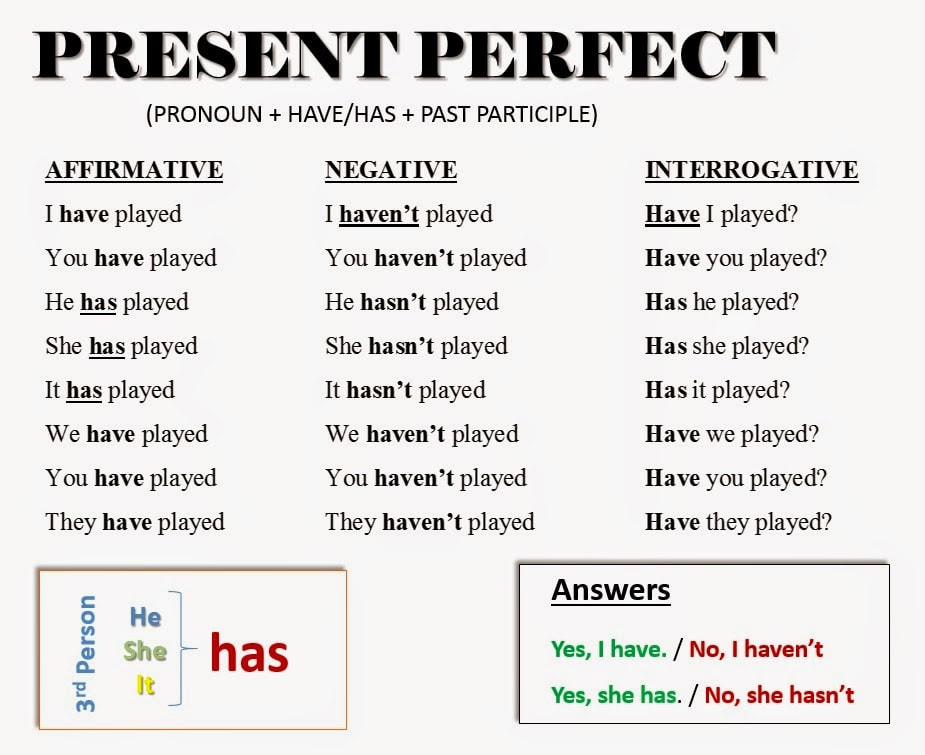
Category Present Perfect Repasando ingles con Lorena
How to use special verbs in Present Perfect 1. be as a main verb. Pronouns Affirmative sentences Negative sentences Questions; I: I have been to Britain.: I have not been to Britain.: Have I been to Britain?: you: You have been to Britain.: You have not been to Britain.: Have you been to Britain?: he, she, it

Clip Gott Erläuterung lista de verbos present perfect Wiederholt
To make the positive present perfect tense, use: 'have' / 'has' + the past participle. Make the past participle by adding 'ed' to regular verbs (for example, 'play' becomes 'played') There are a few verbs that change their spelling when you add 'ed' (for example, 'study' becomes 'studied') We also have some completely irregular verbs.
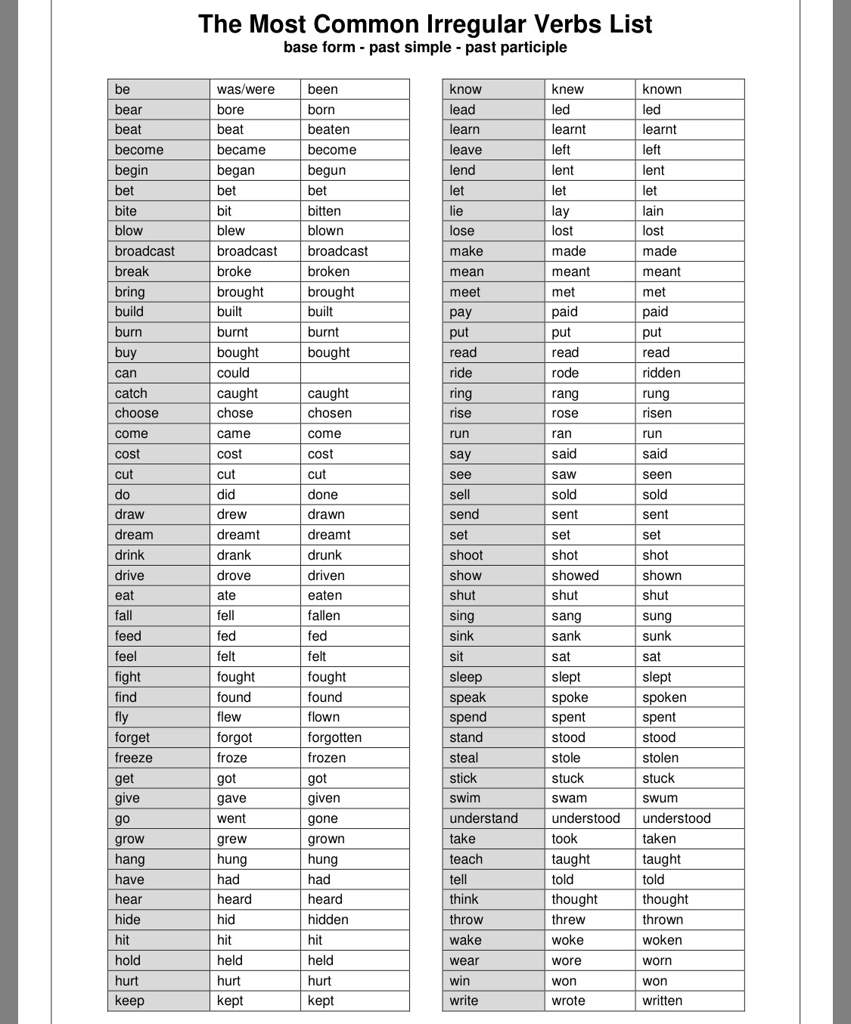
Example Ejemplos De Verbos En Presente Perfecto En Ingles Most Popular
Unlimited English practice. Get personalised guidance & win fun awards. Learn 1500+ English skills on IXL.com. Grammar, reading, spelling, & more!

English Grammar Present Perfect Simple
When verbs are written in the past tense they often end in -ed. If the word already ends in an e then you just need to add a -d. For example: free = freed, agree = agreed. However, this is not.

the present perfect irregular verbs worksheet is shown in this image
Verbos en presente perfecto en inglés: Como ya lo sabes, para formar el presente perfecto, se necesita el auxiliar have o has, dependiendo del sujeto, y siempre va acompañado por un verbo en participio pasado. Veamos entonces cómo deben usarse los verbos en presente perfecto en inglés, en el caso de los verbos irregulares.
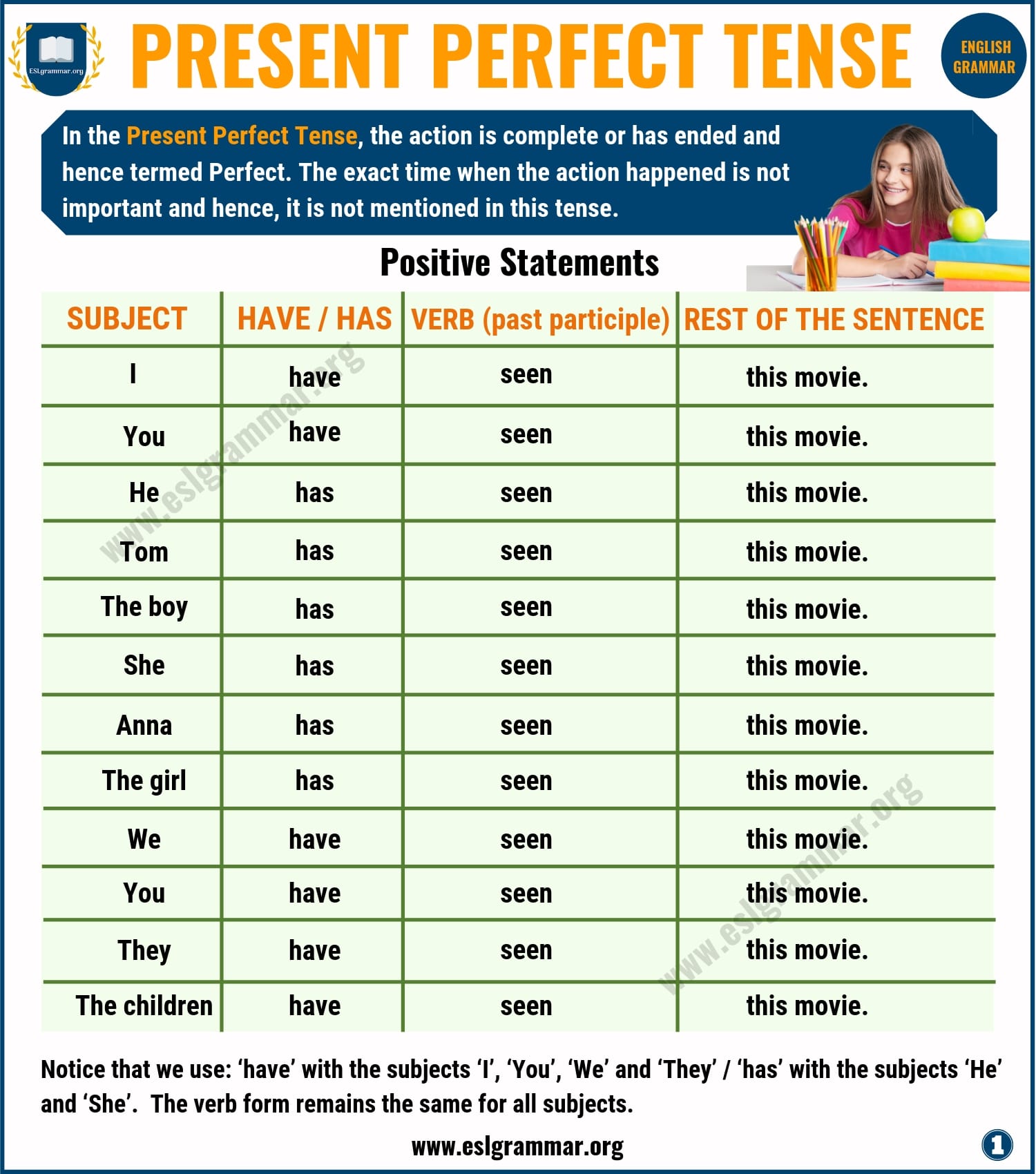
Sintético 100+ Foto Diferencia Entre El Past Simple Y El Present
Lista de verbos en presente perfecto: cuándo y cómo usarlos 22 de marzo de 2023 Author Berlitz El presente perfecto es un tiempo verbal que se usa para narrar experiencias que pasaron hace tiempo, pero todavía se recuerdan o son importantes actualmente. Es muy común y por eso es importante saber utilizarlo.